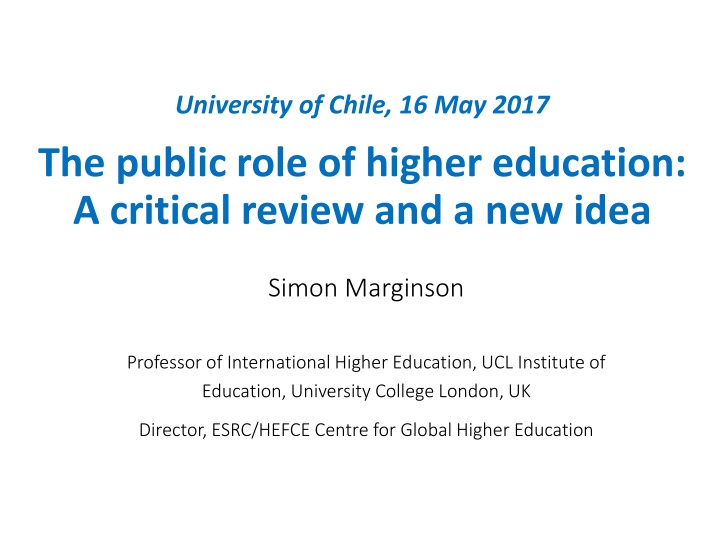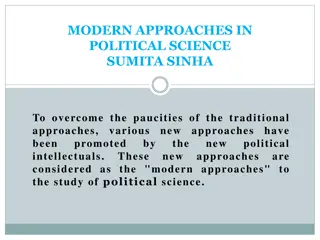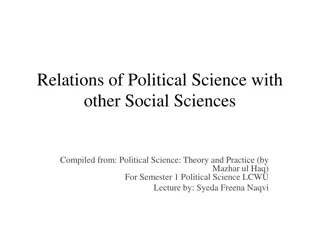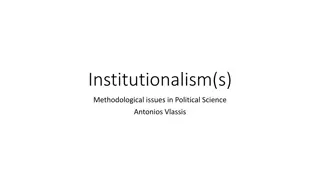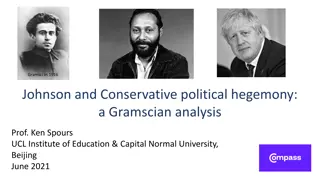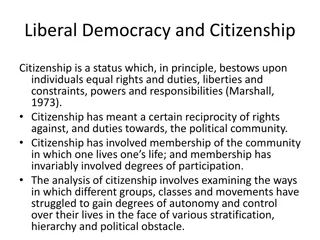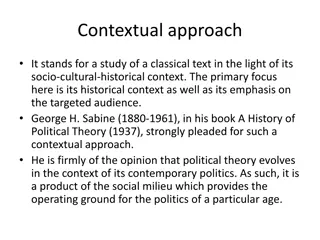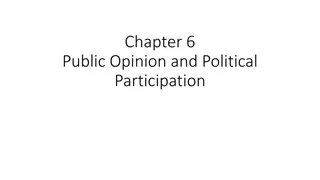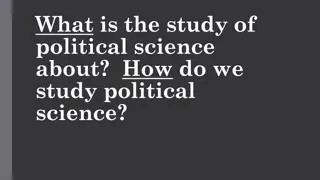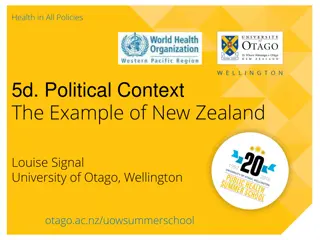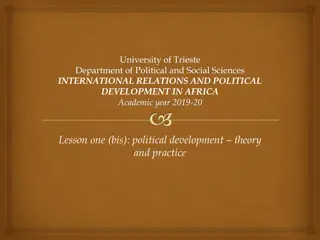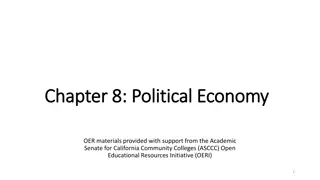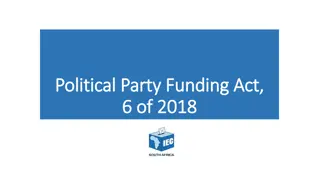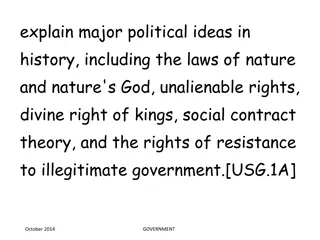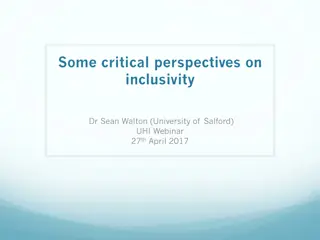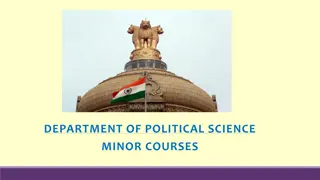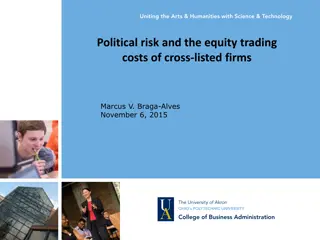The Public Role of Higher Education: Economic and Political Perspectives
In this insightful analysis, Simon Marginson explores the dichotomy between public and private goods in higher education, examining their economic and political dimensions. The discussion delves into the definitions, implications, and global variations of public goods within academic settings, shedding light on critical considerations that shape the landscape of educational policies and practices.
Download Presentation

Please find below an Image/Link to download the presentation.
The content on the website is provided AS IS for your information and personal use only. It may not be sold, licensed, or shared on other websites without obtaining consent from the author.If you encounter any issues during the download, it is possible that the publisher has removed the file from their server.
You are allowed to download the files provided on this website for personal or commercial use, subject to the condition that they are used lawfully. All files are the property of their respective owners.
The content on the website is provided AS IS for your information and personal use only. It may not be sold, licensed, or shared on other websites without obtaining consent from the author.
E N D
Presentation Transcript
University of Chile, 16 May 2017 The public role of higher education: A critical review and a new idea Simon Marginson Professor of International Higher Education, UCL Institute of Education, University College London, UK Director, ESRC/HEFCE Centre for Global Higher Education
Three questions about public good 1. Is the public/private line a distinction between - non-market or market forms of education (economic distinction), - state or non-state controlled education (political distinction)? 2. What are public goods in higher education? How are they defined, observe, measured and improved? 3. Is there a common understanding of public/private in higher education across the world?
Economic definition of public/private based on market vs. non-market production Samuelson (1954) Public goods are non-rivalrous and/or non excludable. They are under-produced or unproduced in economic markets. All other goods are private goods
Economic public goods: non-rivalrous and non-excludable Goods are non-rivalrous when consumed by any number of people without being depleted, e.g. knowledge of a mathematical theorem, sustains use value everywhere, globally, indefinitely, on the basis of free access Goods are non-excludable when benefits cannot be confined to individuals, e.g. clean air regulation, defence Private goods are neither non-rivalrous nor non- excludable. They can be produced, sold and bought as individualised commodities in economic markets. This public/private distinction is between non-market production and market production Research is primarily a public good. Teaching/student places can be either public or private; depends on policy
Political definition of public and private state vs. non-state The line between public and private is to be drawn on the basis of the extent and scope of the consequences of acts which are so important as to need control, whether by inhibition or by promotion The public consists of all those who are affected by the indirect consequences of transactions ~ John Dewey, The Public and its Problems, 1927, pp. 15-16 Matters with consequences for others include market transactions, organisation of education systems, etc This public/private distinction is between state- controlled and non-state controlled production
Putting the two definitions together The economic distinction is non-market vs market The political distinction is state vs non state For Paul Samuelson higher education is public, unless it can be produced in a market outside the state. For John Dewey public or private is decided by states and/or democratic communities The economic and political definitions each have virtues, but also gaps, and each is ambiguous Putting them together creates four unambiguous categories (four political economies) that can be used to explain higher education and research
Public and private goods: four political economies of education Non-market goods Quadrant 2: SOCIAL DEMOCRACY Quadrant 1: CIVIL SOCIETY Teaching: Free or low cost, low differentials between HEIs Teaching: Private learning in Internet, libraries Research: Publicly funded, integral to researcher Research: Self-made scholarship and inquiry State sector goods Non-state sector goods Quadrant 4: COMMERCIAL MARKET Quadrant 3: STATE QUASI-MARKET Teaching: Commercial market in tuition/degrees Teaching: Quasi market in student places/degrees, fees Research: State quasi- market, product formats, competitive Research: Commercial research and consultancy Market- produced goods NOTE: State, institutions and individuals are active agents in all four quadrants
Global public goods Global public goods are goods that have a significant element of non-rivalry and/or non- excludability and made broadly available across populations on a global scale. They affect more than one group of countries, are broadly available within countries, and are inter-generational; that is, they meet needs in the present generation without jeopardizing future generations. ~ Inge Kaul, I. Grunberg and Marc Stern (Eds.), Global Public Goods: International cooperation in the 21st century, New York, Oxford University Press, 1999, pp. 2 3
Common goods A particular kind of political public good. Collective and relational goods, goods that provide for social solidarity, equity, democratic self-determination, and social and geographic mobility in populations The provision of higher education on the basis of equal social opportunity and maximum social mobility is one such common good
Published 19 December 2016, Melbourne University Publishing https://www.mup.com.au/items/199659
